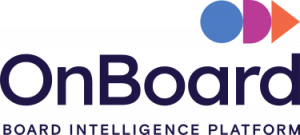Financial Literacy for your Board

Do your board directors have a good grip on your association’s financial situation?
Many smart people are not numbers people. You may have a great board of directors, but do they have a good grip on your association’s financial situation? Are they making informed and effective decisions?
High-performance organizations have boards that make good decisions. Management provides information to assist with the decision-making process. But sometimes, financial reports don’t say enough and sometimes they say too much.
As a general rule of thumb, directors need three things to make informed financial decisions:
- The right information
- The right comparatives and metrics
- The right format
The board needs to know the organization’s financial status. But often they are provided with a set of financial statements and little, if anything else. As a management tool, financial statements reflect a specific point in time and its relevance changes over time. Often, financials include too much or little detail. Even though they may be overwhelmed when presented with pages filled with numbers, board members may be reluctant to admit they do not understand how to dig through the data to find the relevant information.
Instead, present well-structured and well-designed financial management reports. They should:
- Quickly and simply communicate the big picture
- Answer: “Are we moving towards our objectives?” and “Are there risks or opportunities we need to address?”
- Reflect on the organization’s management
Keep it simple
Present financial statements in a format that is easy to review, analyze and understand. Use a table that includes high-level, key functional line items. Provide further detail in the schedules. Those who want to drill down can do so, and those who don’t will not get overwhelmed.
Use the right comparatives
Ensure your report format compares current numbers to both this year’s budget and last year’s numbers concurrently. The comparison figures are of more value than the financials themselves.
Include graphical representation
Bar charts and pie charts work really well for comparisons.
This is a sample format:

Include a short management report that supports the statements by drawing attention to items of note. Explain variances and specify where the board needs to be aware of risks and opportunities, or to make decisions.
As an example, financial reports might show that a program is under budget. Does this mean we’re doing a good job by containing expenses or does it mean we’re not delivering on the planned programming? You may need to flag the variance as it may mean that the organization is not providing strong member value, and the board may be required to provide direction to rectify the situation.
By keeping it simple and informative, well-structured financial reports facilitate a board that is informed, high-functioning and engaged in proper risk management and member value awareness strategies. In addition, the board can intelligently seek opportunities, monitor key milestones and move the strategic plan forward — all for the betterment of your organization and your members.





















